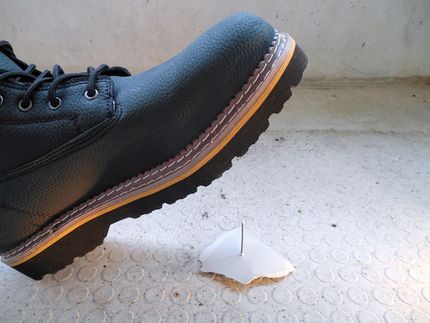First Evidence for a Touch Receptor Gene in Mammals
The skin is the largest sensory organ in humans. The sensory innervation of the skin allows us to perceive touch and pain. Now, Christiane Wetzel, a researcher in the laboratory of Professor Gary Lewin at the Max Delbrück Center for Molecular medicine (MDC) Berlin-Buch, Germany, and her colleagues have deciphered the function of a molecule necessary for the conversion of mechanical stimuli into neural impulses. They have demonstrated that this molecule, a protein called SLP3, is essential for the detection and discrimination of fine tactile stimuli. This study provides evidence for a touch receptor gene in mammals and shows that molecules may in the future prove to be important therapeutic targets for the control of chronic pain.
Christiane Wetzel could show that mice lacking SLP3 are unable to distinguish normally between finely structured surfaces. This serious sensory deficit could be traced to the fact that around one third of the mechanoreceptors in the skin of SLP3 mutant mice fail to respond to any mechanical stimulation.
Although the sensation of touch is not usually associated with pain this situation is dramatically altered after injury to nerve. Thus many people with such injuries suffer from chronic pain in which even light brush stimuli can provoke intense pain. This type of pain, called neuropathic pain, can be modelled in animals and mice lacking SLP3 show virtually no touch-evoked pain when confronted with such a lesion. This data further indicates that by targeting molecules involved in the detection of touch one could achieve a novel way to control neuropathic pain a clinical condition for which few effective treatment options are available.
Touch and pain are detected by sensory neurons which are located in the dorsal root ganglia (DRG) and their "working end" is in the skin attached to the cell body by a long process called the axon. Mechanical stimuli of the skin (brush or pressure) activates the "working end" of the sensory receptor and initiates an electrical signal that is relayed to the spinal cord and brain. The sensory receptor must then convert a mechanical signal into an electrical signal and this process is called sensory mechanotransduction. It is this process of sensory mechanotransduction, that is very poorly understood in mammals. It is thought that mechanical stimuli are converted into electrical events by specialized ion channels, these channels can be opened when the membrane is physically indented, leading to an increased flow of charged ions into the cell to produce an electrical signal.
In this study the activity of such ion channels was measured in response to extremely small indentation stimuli (nanometer range). It was found that in many sensory neurons SLP3 was required for the function of such mechanosensitive channels.
Original publication: Christiane Wetzel, Jing Hu, Dieter Riethmacher, Anne Benckendorff, Lena Harder, Andreas Eilers, Rabih Moshourab, Alexey Kozlenkov, Dominika Labuz,Ombretta Caspani, Bettina Erdmann, Halina Machelska, Paul A. Heppenstall, Gary R. Lewin; "A stomatin-domain protein essential for touch sensation in the mouse"; Nature online 2006.
Topics
Organizations
Other news from the department science

Get the life science industry in your inbox
By submitting this form you agree that LUMITOS AG will send you the newsletter(s) selected above by email. Your data will not be passed on to third parties. Your data will be stored and processed in accordance with our data protection regulations. LUMITOS may contact you by email for the purpose of advertising or market and opinion surveys. You can revoke your consent at any time without giving reasons to LUMITOS AG, Ernst-Augustin-Str. 2, 12489 Berlin, Germany or by e-mail at revoke@lumitos.com with effect for the future. In addition, each email contains a link to unsubscribe from the corresponding newsletter.


















































